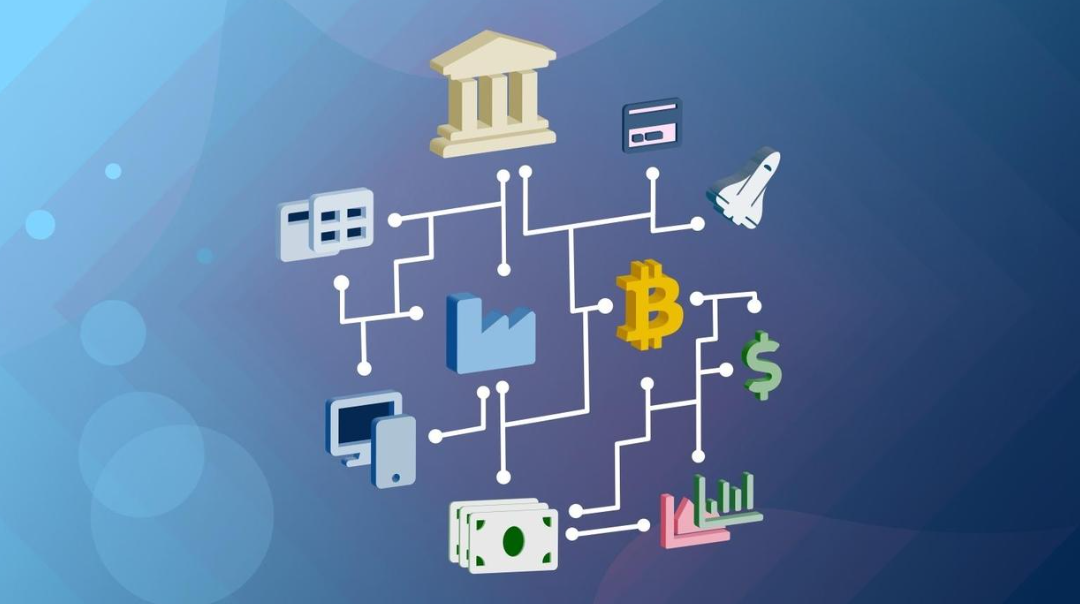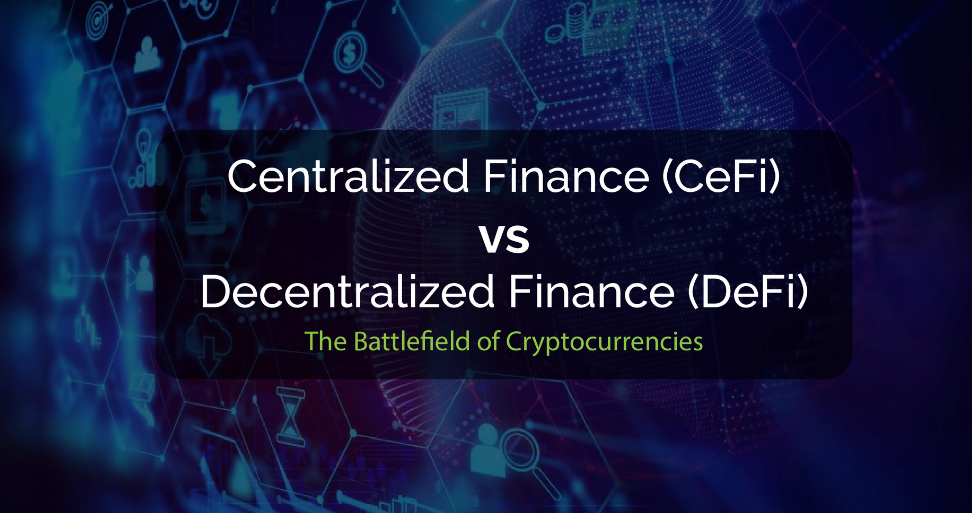Are Crypto Banks the Intersection of Traditional Finance and DeFi? DeFi is an emerging alternative financial system that uses peer-to-peer networks to conduct transactions without third-party intermediaries. Digital assets are exchanged between users via “smart contracts” that are self-executing algorithms based on blockchain technology. A key component of DeFi is tokenization, which allows physical and virtual assets to be turned into “tokens.” Tokens act as stores of value and are used in financial transactions. They also allow their holders a voice in decisions involving those assets. DeFi’s tokenization approach has the potential to solve the following five problems inherent in traditional finance:
BlockFi
Cryptocurrencies are an emerging form of currency that is gaining momentum in the financial markets. Unlike traditional currencies, these currencies do not require centralised intermediaries. Instead, transactions are executed by smart contracts that require little to no human oversight. This type of technology also relies on open-source technology, which means that anyone can modify it to fit their particular needs.
Decentralized finance (DeFi) is a growing movement aimed at providing financial services without centralized institutions. It has several advantages over traditional finance, including low transaction costs and global accessibility. Using decentralized technology and blockchain, it is possible to conduct financial transactions with minimal or no fees.
As the market for cryptocurrencies grows, so do the types of businesses that can be created. Some are vaguely familiar, while others resemble science-fiction entities. While traditional banks must have reserves for the money they loan out, crypto outfits don’t. This means that they can lend to risky institutions without worrying about the collateral required by traditional banks. If you are looking for a way to invest in cryptocurrencies, consider Crypto Banks.
While Crypto Banks are a nascent phenomenon, the rise of digital payments in the eurozone and the spread of crypto trading are key drivers of this development. However, there are many risks that are associated with these new assets and services. As a result, there are no regulatory safeguards to protect investors and financial consumers.
Early stage companies at the intersection of fintech and crypto are building a new generation of financial services. But for these companies to be successful, they need an infrastructure that is flexible enough to evolve with them. Until this is achieved, the future of Web3 and DeFi is uncertain. The adoption of fully decentralized finance remains far off.
Nexo
If you look at traditional finance, you will find an industry that relies on intermediaries and is heavily regulated. Regular consumers must deal with a tangle of middlemen, all of whom have to comply with various regulations and controls. In addition, businesses must complete know-your-customer and anti-money laundering checks. But what happens when you bring a blockchain-based system into the mix?
The banking industry has increasingly recognized DeFi as a potential growth engine and a disruptive force, and is actively exploring how to engage in the sector. This article will examine some of the key differences between traditional finance and DeFi, and identify areas for potential engagement with this emerging industry.
While these platforms are offering services that are familiar to traditional banks, the biggest hurdles crypto lenders face include the volatility of the crypto markets and the risk of hacking. Despite these challenges, several major crypto lenders are operating in the United States. Genesis, a New York-based company, originated $44.3 billion worth of loans in the first quarter of 2019. BlockFi and Nexo are two other large crypto lenders, with $10 billion in assets under management, respectively. But despite their growing popularity, these crypto lending platforms still lack a clear regulatory framework.
Crypto banks are an exciting prospect for the future of financial services. As blockchains become increasingly integrated into everyday life, they can eliminate the need for intermediaries and reduce the costs associated with banking. With this technology, people in remote areas of the world can access banking services via mobile devices.
Smart contracts can make financial transactions faster and more reliable, with no human intervention. Smart contracts can also automate loan servicing processes and make deposit and interest payments. This makes banking accessible to a broader range of people and could make banking more accessible for the formerly excluded.
Despite their potential to transform traditional finance, crypto banks have a long way to go before they become mainstream. But if they do, they should make sure that they provide an easy user experience. They must be transparent about how much they earn with their clients. And they should make it easy for them to understand how their funds are invested.
While DeFi has many advantages, it also comes with some drawbacks. In addition to a lack of consumer protection, consumers should be aware of the risks involved when investing in DeFi. One of the most notable risks is the lack of regulation. The anonymity of users also allows fraudsters to exploit the opportunity to steal their money.
Crypto banks can be considered the intersection of traditional and digital finance. They can facilitate a range of financial transactions and services. However, users must navigate account onboarding. For instance, Plaid is exploring ways to reduce the friction associated with this.
Challenger banks
A challenger bank is a digital bank that competes with traditional banks. These banks don’t have physical branches, so they don’t have to invest in the costs of maintaining a physical presence. Their main focus is on offering online banking and fee-free transactions. They also offer various services that traditional banks don’t offer, such as cashback rewards for purchases. These rewards vary from bank to bank, but are typically about 10% of the amount of purchases made.
One such challenger bank is Current, a firm that has built a platform that blends blockchain-based services with traditional banking. Current was founded seven years ago, when the concept of decentralized finance was just a buzzword. Its founder, Stuart Sopp, was previously a head of foreign exchange at Morgan Stanley. Sopp was introduced to bitcoin in 2011 after his colleague Trevor Marshall showed him a white paper.
Today Current, a fintech company founded by former Wall Street trader Stuart Sopp, raised $3.6 million in seed capital. Its investors include Expa, founded by former Uber executives Garrett Camp and Naveen Selvadurai, Future Perfect Ventures, and Human Ventures. However, the company may not be able to match the expertise of its competitors.
Another challenger bank is Chime, which offers a free option for people who want to explore the cryptocurrency market. Its free service enables users to trade currencies, withdraw $300 per month from ATMs, and invest in cryptocurrency. It also offers a premium option that allows users to withdraw up to $600 a month fee-free. Chime also offers fee-free overdraft protection, a credit-builder secured credit card, and an automatic savings plan.
A challenger bank is a neobank with a range of services. It is also a digital bank. Its e-money accounts are regulated by the Financial Conduct Authority (FCA), a U.K. financial regulator. It is vital that the money you deposit in a challenger bank is safe, so this regulatory framework is in place to help protect it.
The digital transformation of the banking industry has begun with the rise of challenger banks. These institutions are adopting new technologies to solve customer problems that were not present before the digital age. As a result, they have emerged as a leading innovator in finance. They have also been pioneers in decentralised finance and have taken the lead in many ways.
However, there are several risks that challenger banks must be aware of. One is the risk of being a target for criminals. They may exploit the speed and anonymity of the online environment to evade regulatory oversight. This means that challenger banks should focus on providing risk-based solutions and adopting effective compliance solutions.
The rise of challenger banks is transforming the financial industry, and traditional banks should take note. While traditional finance and digital finance are becoming more closely linked, there are still major differences between the two sectors. As a result, many crypto holders remain hesitant to use commercial banking services. However, many challenger banks have begun to offer innovative services to crypto holders.




